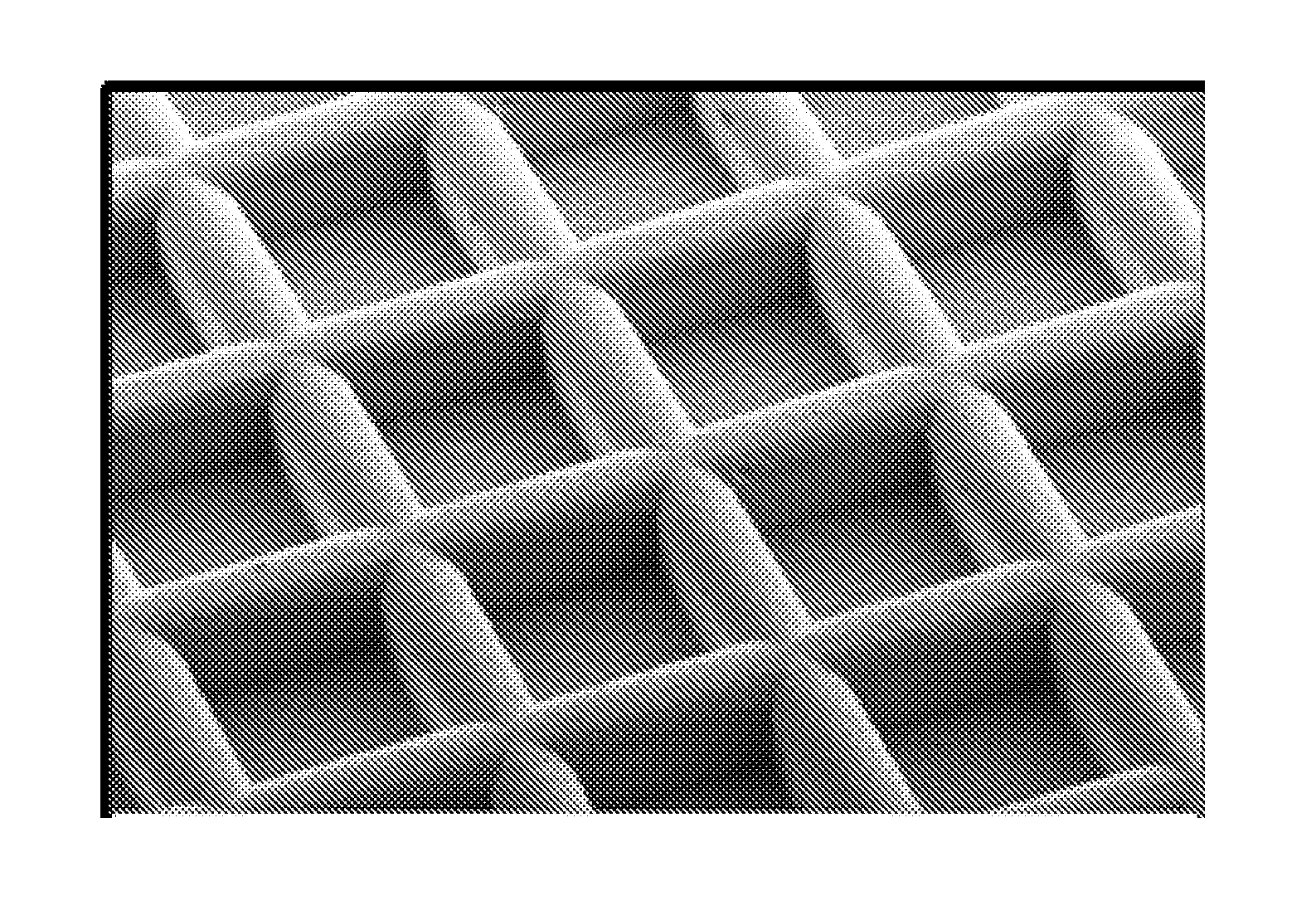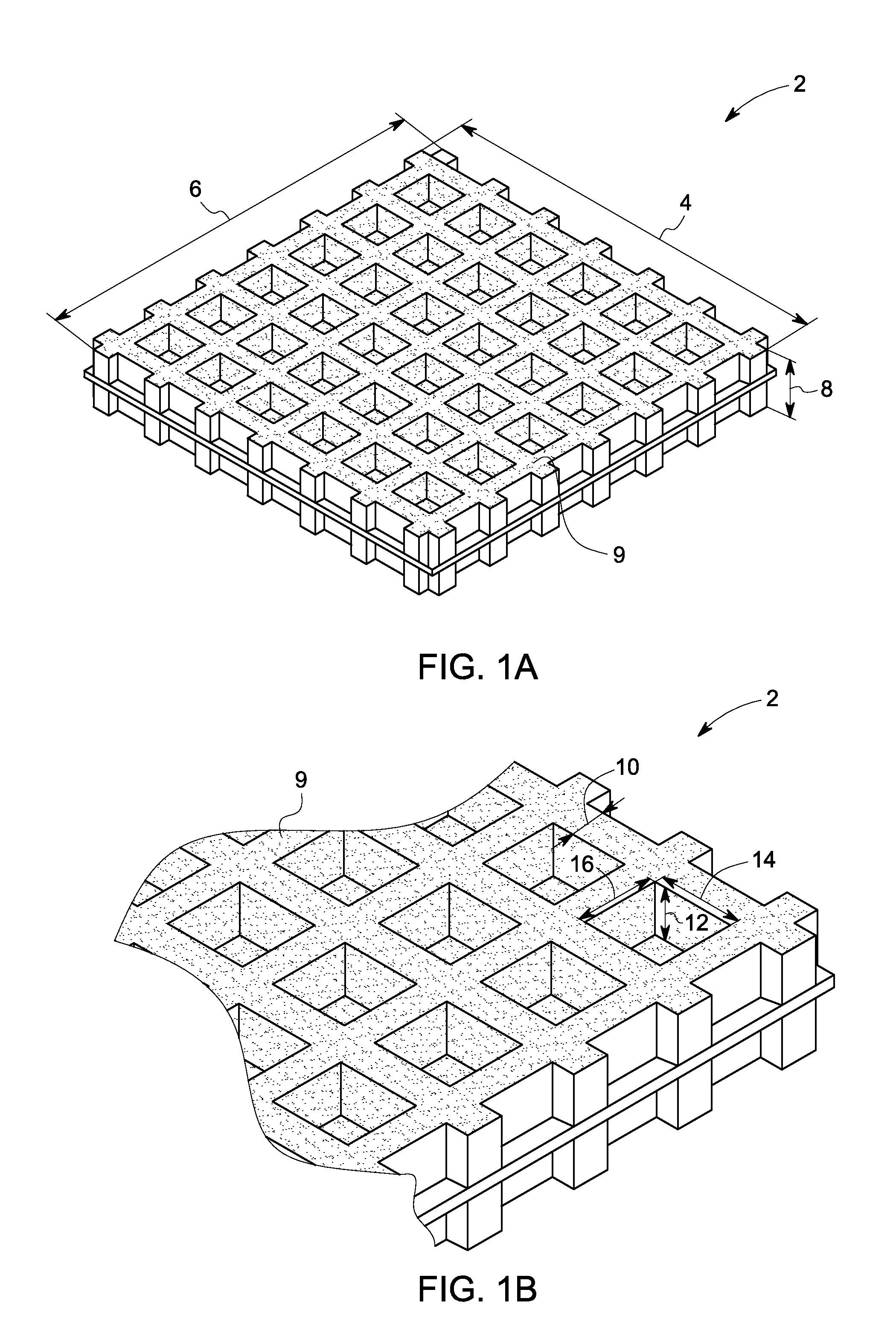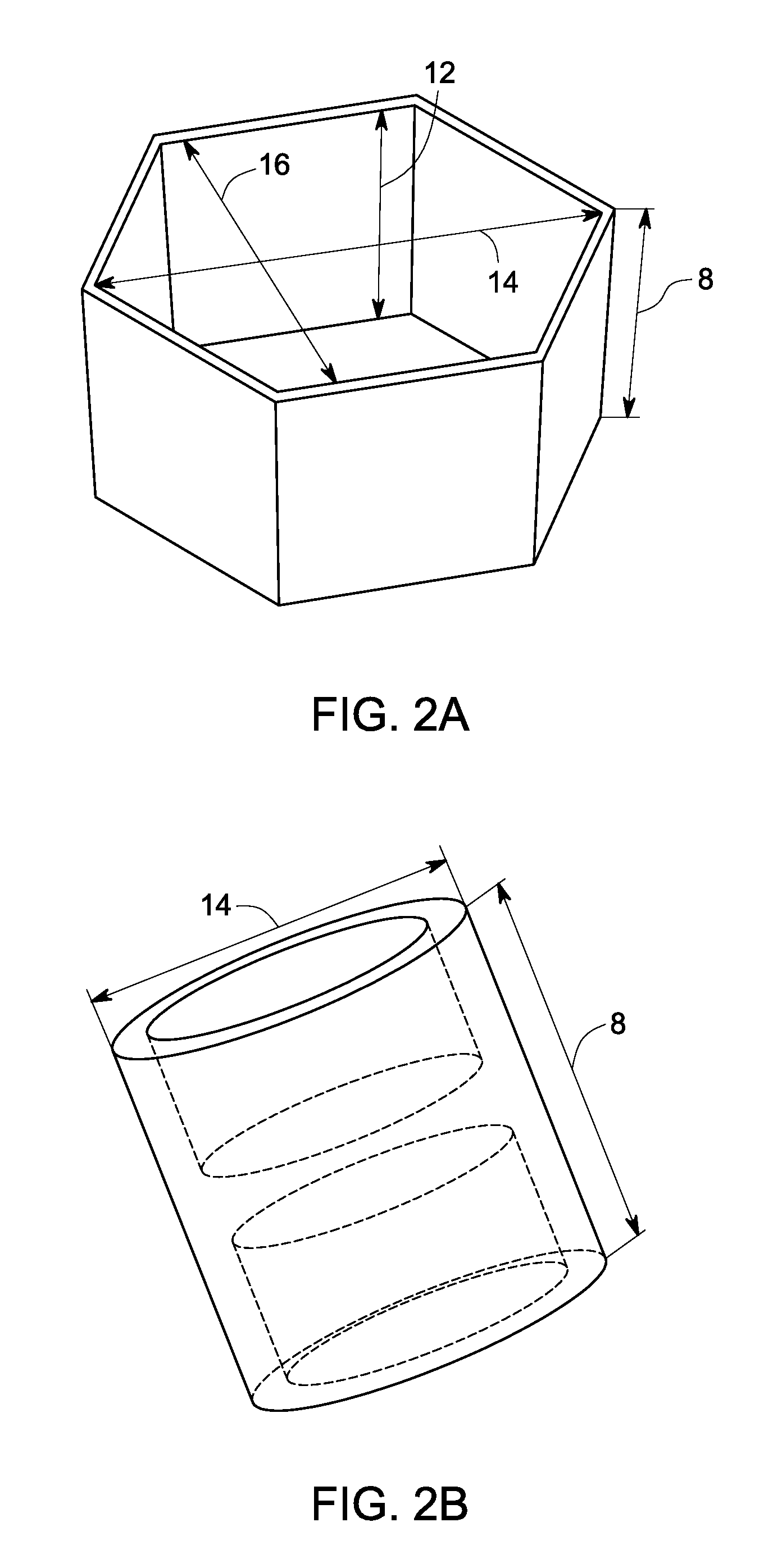Cell carriers and methods for culturing cells
a cell carrier and cell technology, applied in the field of cell carriers, can solve the problems of large number of cells, difficulty in culturing cells,
- Summary
- Abstract
- Description
- Claims
- Application Information
AI Technical Summary
Benefits of technology
Problems solved by technology
Method used
Image
Examples
example 1
Fabrication of Carrier for Growing Cells
[0070]Method of Making a Pattern Master—
[0071]A pattern-master was prepared by cutting grooves in a flat aluminum block using a dicing saw, which is outfitted with a resin-bonded diamond blade. A set of parallel grooves (the term being interchangeably used with ‘indentations’) was first cut in one direction, then a second set of parallel grooves was cut perpendicular to the first set of grooves. Finally, an effort was made to remove burrs that had formed in the first set of grooves during the cutting process. After the grooves were completed, the aluminum block was cleaned to remove any burrs on its surface. The pattern master determined the pattern geometry of the embossed carriers.
[0072]Formation of First Generation Mold from the Pattern Master—
[0073]A first-generation mold was then made from the pattern-master using a fluorosilicone rubber, FSL 7661 (purchased from Momentive Performance Materials, Waterford, N.Y.). To produce the first-gene...
example 2
Aqueous NaCl Coating of Plasma Treated Polystyrene Carriers
[0086]Materials:
[0087]The materials used for the subsequent examples include centrifuge tubes, disposable spinner flasks and Synthemax® II substrates purchased from Corning® (MA, USA). Matrigel™ matrix was purchased from BD Biosciences. Laminin 521 was purchased from BioLamina (Stockholm, Sweden). Accutase™ was purchased from MP Biomedical (CA, USA) and Invitrogen™ (NY, USA); TrypLE was purchased from Invitrogen (NY, USA). mTeSR™-1 medium was purchased from STEMCELL™ Technology Inc. (Vancouver, BC, Canada). Y-27632 (ROCK Inhibitor) was purchased from Sigma Aldrich (St. Louis, Mo.) and Millipore®.
[0088]Cell Carriers—
[0089]The carriers used for the following examples had a length and width of 6.5 mm, and a height of about 0.5 mm. The carriers comprised a plurality of structured indentations on each of the two outer surfaces. Each of the structured indentations had a major axis and minor axis of 0.45 mm each and a depth of 0.2 ...
example 3
Aqueous Ethanolic NaCl Coating of Plasma Treated Polystyrene Carriers and Subsequent Human Embryonic Stem Cell Growth
[0097]Carriers were roll-to-roll embossed on both sides with 650 nm pitch waffle pattern (450 nm square well size with a depth of 200 μm) and cut into hexagonal pieces (0.25″ edge-to-edge width). Carriers were plasma treated as a 1135 g batch in a commercial rotating drum plasma system with a central rod anode. The plasma was generated at 500 W with a 1000 sccm flow of O2 for 18 minutes with a rotation rate of ˜5 rpm. Carriers were stored at room temperature and ambient humidity for approximately one month before aliquots were prepared (1.17 g / batch) in polypropylene 50 mL centrifuge tubes (Corning).
[0098]A 110 mM solution of NaCl in H2O was prepared and diluted 1:5 with a 50 / 50 volumetric mixture of ethanol (200 proof non-denatured, Pharmco) and water. Carriers were washed thrice in 25 mL of isopropanol, thrice in 18.2MΩ deionized water and thrice in the prepared sal...
PUM
| Property | Measurement | Unit |
|---|---|---|
| height | aaaaa | aaaaa |
| height | aaaaa | aaaaa |
| height | aaaaa | aaaaa |
Abstract
Description
Claims
Application Information
 Login to View More
Login to View More - Generate Ideas
- Intellectual Property
- Life Sciences
- Materials
- Tech Scout
- Unparalleled Data Quality
- Higher Quality Content
- 60% Fewer Hallucinations
Browse by: Latest US Patents, China's latest patents, Technical Efficacy Thesaurus, Application Domain, Technology Topic, Popular Technical Reports.
© 2025 PatSnap. All rights reserved.Legal|Privacy policy|Modern Slavery Act Transparency Statement|Sitemap|About US| Contact US: help@patsnap.com



